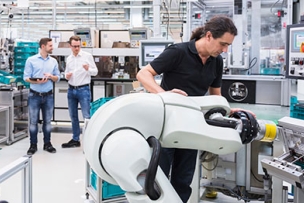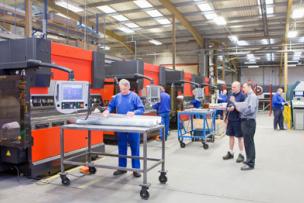As a brand of Saint-Gobain, a world leader in sustainable habitat, Norton offers the widest portfolio of grinding, cutting, blending, finishing and polishing solutions for all markets, materials and applications with the most advanced and affordable technology. So, as your needs evolve, our access to the global expertise of Saint-Gobain becomes even more valuable to making a difference in your day-to-day needs. And, we don’t have to look far for more localized expertise with our largest research center located right nearby in Northboro, MA.
By Dave Goetz, Corporate Application Engineer, Norton | Saint-Gobain Abrasives
Choosing an appropriate tool and using it correctly can have a positive effect on the grinding process. However, knowing how to select a tool and what solutions are available to dress conventional grinding wheels is very useful.
Production grinding relies on several components working together to achieve desired results. Whether that result is a size, shape, finish, or combination of these, the system works best when all its components are optimized and being used correctly.
The focus is on the abrasive and using the best grinding wheel available, but there is more to the system than just the abrasive wheel. Coolant also has a substantial effect on the grinding operation. However, the most overlooked component of the grinding system is the truing and dressing tool.
Often, a premium abrasive product will be installed at a premium price, and it is then expected to perform optimally while truing and dressing it with the least expensive tool possible. It is akin to putting regular fuel in a high-performance car.
Whether using a rotary device or a stationary tool, in many systems the dressing tool is almost completely forgotten about until a finish, form or geometric issue occurs and an investigation ensues.
Choosing an appropriate tool and using it correctly can have a positive effect on the grinding process. However, knowing how to select a tool and what solutions are available to dress conventional grinding wheels is very useful.
Differentiating Truing and Dressing
Truing and dressing is often thought of as being the same process, with the terms sometimes used interchangeably when discussing the truing and/or dressing procedures. This is likely since, with the exceptions of some resin or metal bonded products in which the wheels are trued offline and then remounted and dressed, the two operations are usually done at the same time.
However, they are two different processes.
Truing operations deal with the form or profile of the grinding wheel. When truing a new abrasive wheel, the grinding face is altered to allow the abrasive product to do what it needs to do. Routine truing during the grinding process corrects the wheel profile and compensates for form loss as the wheel breaks down under regular use. A properly trued wheel will impart the correct profile on the part being ground and ensure the form geometry and dimensioning are to spec and ready for use.
Although the term “dressing” is often used to describe the truing and dressing, dressing operations only restore or alter the condition of the wheel face. Grinding wheels are dressed to restore or change their ability to remove stock or generate a specific finish. If the wheel is being used to remove stock, the grinding face is dressed to expose new and sharp cutting points, allowing the wheel to cut with a higher material removal rate. However, the tradeoff is that the finish may be unfavorable. A wheel dressed in this condition is said to be “open.”
If the wheel is being used to generate a specific finish, the grinding face will be dressed to dull or blunt the cutting points, allowing the wheel to rub more and create the finish necessary. The tradeoff here is that although the finish is good, the stock removal rate will be much lower. A wheel dressed in this condition is said to be “closed.”
It is also important to know how to choose the correct diamond tool for the operation.
Tool Selection Considerations
There are three considerations when selecting the appropriate tool:
-
The size, bond and abrasive type of the wheel being used
-
The form or profile required on the wheel
- The quality of the diamond in the tool
Abrasive wheels are, in the most basic sense, stones. To generate a form on that stone, or create a specific surface condition on it, a harder stone is needed. Diamonds are used to true and dress grinding wheels since diamonds are the hardest known material.
The first consideration helps determine the required diamond tool size in carats. Whether the tool will be a single diamond or multiple diamond design, knowing the size, bond and abrasive type of the wheel being trued and dressed will help determine how big the diamond needs to be.
Although the diamond tool will be harder than the grinding wheel it will be used on, the abrasive grains will eventually erode the diamond. The amount of diamond wear is a function of the amount of time the diamond is in contact with the wheel, so a larger wheel will need a larger diamond.







Talk to Us!
Leave a reply
Your email address will not be published. Required fields are marked *